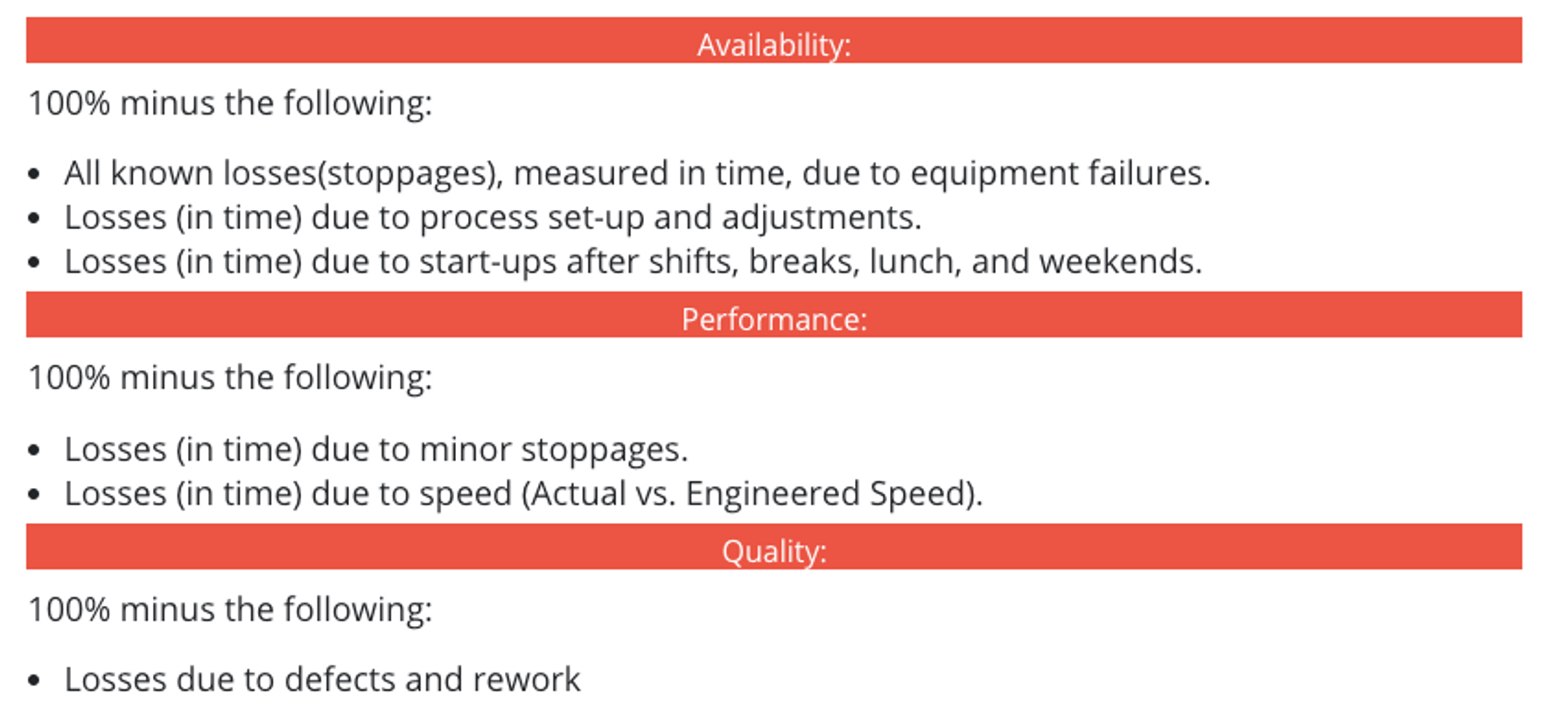Total Productive Maintenance (TPM)
Summary of TPM
Total Productive Maintenance (TPM) is a systematic approach to equipment maintenance and management that aims to maximize the efficiency, reliability, and overall performance of machinery and equipment in a production or manufacturing environment.
TPM was developed in the 1970's as a method of involving machine operators in the preventive maintenance of their machines - a reaction to increasing specialization and centralization of the maintenance function that had created division-of-labor barriers between operators and the maintenance of their machines and equipment.
Autonomous maintenance activities tap the knowledge and skill of the people who work with the equipment on a daily basis, and gives operators a stake in the performance of the equipment. This involvement is part of a larger philosophy of continuous improvement, or Kaizen, that touches all shop floor activities. Involving machine operators also makes the regular maintenance people more productive by focusing them on more extensive preventive maintenance (PM) tasks.
The overriding objective of TPM is the elimination of LOSSES. Losses, or waste, includes equipment downtime, defects, scrap, accidents, wasted energy, and labor inefficiency.
Equipment reliability is a cornerstone of a lean production system. With little or no buffer inventories, equipment failures directly impact production volumes and customer service, so effective preventive maintenance is a critical activity. By bringing together people from all departments concerned with equipment into a comprehensive PM system, equipment effectiveness is raised to the highest possible level.
Most TPM programs are built upon autonomous small group activities - the people closest to the action. This requires the support and cooperation of everyone from top management on down.
Benefits of effective TPM include the following:
- Safer Working Environment
- Improved Equipment Reliability - Uptime
- Increased Capacity
- Increased Productivity
- Improved Quality
- Company Financial Performance and Job Security
Concept of Zero
The goal of TPM is to drive all waste to zero: Zero Accidents, Zero Defects, Zero Breakdowns.
On the surface this may seem impossible, but is it possible to run for an hour with no accidents, defects, or breakdowns? If it can be done for an hour, can it be done for two hours? a shift? a day? and so on.
The Concept of Zero is built upon error-proofing activities, or Poka-Yoke, in the design of the process to make it impossible to make and pass on defects. Poka-Yoke concepts are also commonly applied to equipment to prevent breakdowns (e.g. automatic lubrication systems).
EXAMPLE: So, if Availability is 95%, Performance is 97%, and Quality is 98%, then OEE is .95 x .97 x .98 = 90.3%
Core Elements of TPM
There are five core elements to a TPM program:
- Operator Self-Maintenance - Basic program of cleaning, lubrication, general inspection, and minor preventive maintenance to be completed by production operators (associates).
- Conduct Planned Maintenance - Develop and execute planned maintenance activities. Establish standards for each piece of equipment, prioritize equipment based on relative importance to safety, quality, productivity and cost. Establish a maintenance plan for each piece of equipment - may be based on time, condition, overhaul, or predictive maintenance.
- Small Group Kaizen Activities - Team activities that focus on eliminating losses by focusing on all elements of OEE. The 5-Why analysis is often used to guide small group actions.
- Education and Training - All employees must be systematically trained to provide awareness and improve skill levels.
- Maintenance Prevention - Early equipment management is a system whereby shop-floor personnel participate in the new equipment concept and design phase to develop equipment that requires less maintenance, and is more easily maintained when maintenance is required. As with all processes, the most leverage to effect change exists in the design phase.
Maintenance Activities
There seven primary Maintenance Activities to support the Five Core Elements of TPM:
- Education and Training - Program to systematically enhance maintenance technical skills. Many organizations have effectively adopted pay-for-skills programs.
- Support and Guidance for Operator Self-Maintenance - Provide instructions to operators on cleaning, lubrication, safety, and contamination countermeasures. Support Kaizen activites.
- Downtime Countermeasures - Track breakdowns, analyze root cause, apply countermeasures. The goal is to increase mean time between failures (MTBF) and reduce mean time to repair (MTTR).
- Preventive Maintenance Program - Identify and number all equipment, establish standards for cleaning, lubrication, and inspection. Develop schedule of PM activities and track conformance to schedule - this includes lubrication program activities.
- Spare Parts Management - Establish inventory standards and reorder points for parts needed on Planned basis. Apply 5-S principles to storage area.
- Maintenance Cost Analysis - Understand where cost is incurred for parts, indirect supplies, oils & lubricants, manpower, and outside contractors. Organize systematic actions to reduce costs - goal is to reduce long term total cost - not to be sacrificed for short term cost improvement.
- Maintenance Efficiency Improvement - Track maintenance activities by category: planned (time-based, condition-based, predictive), and unplanned (breakdown). Goal is to increase percentage of maintenance hours on planned vs. unplanned, and lower overall total for both.
Recommended Books
- Japan Institute of Plant Maintenance, TPM For Every Operator (Shopfloor Series), (1996, Productivity Press), ISBN: 1563270803
- Keniche Sekine, Keisuke Arai, & Ken'iche Sekine, TPM for the Lean Factory : Innovative Methods and Worksheets for Equipment Management (1998, Productivity Press), ISBN: 1563271915
- Productivity Press Development Team, TPM For Supervisors (1996, Productivity Press), ISBN: 1563271613



